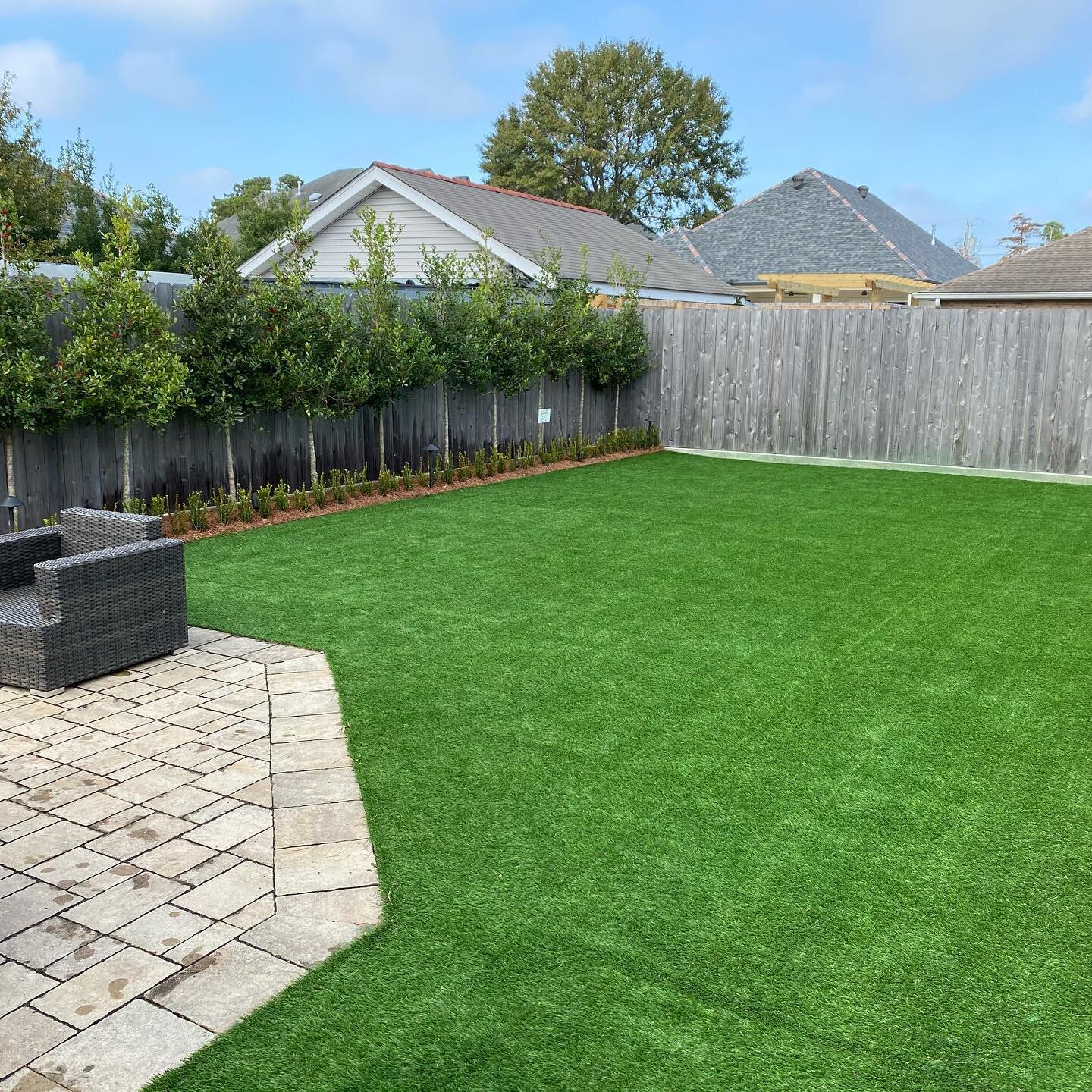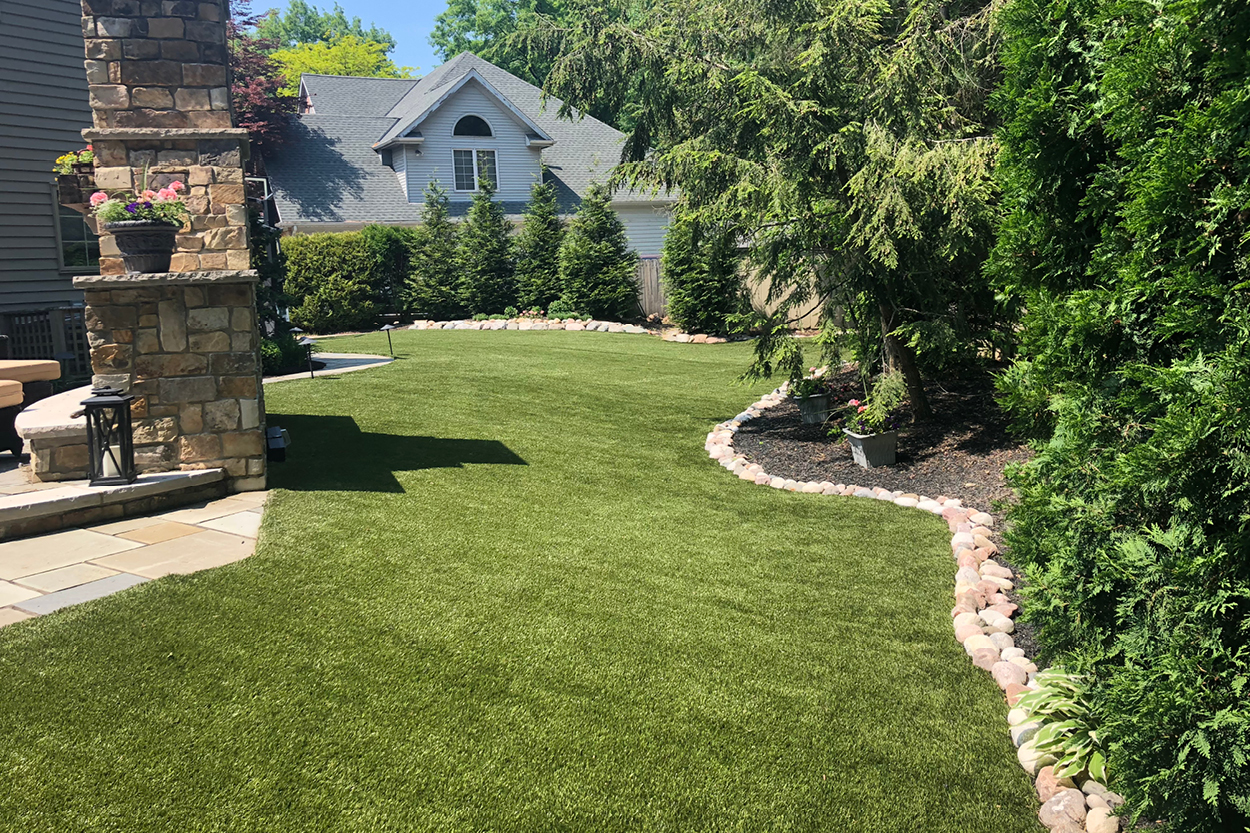Enhance Your Yard with Professional Turf Installation Phoenix AZ Services
Enhance Your Yard with Professional Turf Installation Phoenix AZ Services
Blog Article
Delve Into the Environmental Advantages of Opting for Synthetic Grass Solutions
The fostering of artificial lawn services offers a compelling opportunity to resolve pushing environmental difficulties. By dramatically reducing water use and lessening the application of hazardous chemicals, these options not only advertise sustainable landscape design but also shield local ecological communities.
Water Preservation Advantages
One of the most considerable advantages of man-made grass is its ability to save water. In comparison, synthetic turf does not need watering, substantially minimizing the overall demand for water sources.
By getting rid of the demand for routine watering, artificial lawn adds to sustainable landscape techniques and assists alleviate the environmental effect of too much water consumption. Moreover, the preservation of water extends to the reduction of overflow, which can lead to soil disintegration and waterway pollution.
Furthermore, the setup of synthetic grass permits towns and homeowners to designate water resources more efficiently, focusing on vital usages such as alcohol consumption water and agriculture. The shift towards synthetic grass not only advertises accountable water usage yet likewise straightens with more comprehensive ecological objectives intended at protecting all-natural resources.
As communities increasingly prioritize sustainability, the water preservation advantages of synthetic grass provide an engaging instance for its fostering in commercial and domestic landscaping tasks.
Minimized Chemical Usage
The transition to man-made lawn considerably reduces the reliance on chemical therapies generally made use of in all-natural yard maintenance. Typical grass monitoring normally involves the application of fertilizers, herbicides, and chemicals to advertise development and control parasites. These chemicals can posture threats to human wellness, neighborhood wildlife, and the environment, adding to soil and water contamination.
In contrast, artificial turf removes the demand for these harmful substances. By minimizing the launch of artificial compounds into the environment, man-made lawn promotes much healthier soil and water systems.
Moreover, the absence of chemical runoff associated with synthetic grass setups helps protect local rivers from contamination, sustaining marine life and maintaining biodiversity. Artificial turf companies phoenix. As areas significantly prioritize sustainable methods, choosing for synthetic grass offers a viable option that aligns with ecological conservation goals. Through this change, homeowner can enjoy rich eco-friendly areas without jeopardizing eco-friendly wellness, leading the way for an extra sustainable future
Lower Carbon Footprint
Additionally, the setup of artificial grass can cause considerable water conservation. Natural yards require significant amounts of water for watering, which not only includes in the carbon impact related to water removal and treatment Go Here however likewise strains regional water resources. On the other hand, fabricated grass needs very little maintenance, requiring no watering, therefore considerably minimizing water use and its linked power expenses.
Furthermore, the durability of synthetic lawn adds to its decreased carbon effect. With a life-span of up to 15 years or more, the requirement for frequent replacements is decreased, leading to much less waste and reduced power usage in production and getting rid of typical grass options. Overall, synthetic grass offers a lasting choice for eco conscious landscaping.
Habitat Conservation
Habitat conservation is a critical consideration in the dispute over landscaping options, especially when comparing synthetic grass to natural turf. Natural yard lawns usually call for considerable maintenance, including making use of plant foods, herbicides, and chemicals, which can detrimentally influence neighborhood ecological communities. These chemicals can seep into the dirt and rivers, damaging indigenous plants and fauna and interfering with neighborhood environments.
Fabricated turf eliminates the need for unsafe chemicals, therefore protecting close-by wildlife and preserving the stability of bordering ecological communities. The installation of artificial grass can lead to the conversion of former turf locations right into even more biodiverse landscapes, such as pollinator gardens or native plant areas, which can support neighborhood wild animals.
Eventually, the change to synthetic grass not just saves water and minimizes upkeep initiatives however also fosters a more unified relationship between human tasks and the natural setting, advertising habitat preservation while doing so.
Long-Term Sustainability
Long-lasting sustainability is an important aspect in assessing the advantages of artificial grass over conventional yard lawns. Among the most considerable benefits of synthetic grass is its sturdiness; it can last up to 15-20 years with minimal upkeep, whereas all-natural grass website here calls for frequent reseeding and replacement. This long life minimizes the need for constant sources, such as water, fertilizers, and pesticides, which are vital for keeping a healthy yard lawn.
In addition, synthetic grass contributes to a decrease in carbon emissions related to lawn treatment tools. Typical grass commonly call for gas-powered mowers, leaners, and blowers, all of which add to air contamination. Arizona turf. On the other hand, synthetic grass eliminates the requirement imp source for such equipment, advertising a cleaner atmosphere
Additionally, the manufacturing of synthetic grass progressively makes use of recycled products, improving its sustainability account. As suppliers adopt environmentally friendly techniques, the environmental footprint of synthetic grass remains to decrease.

Final Thought
The adoption of fabricated turf services presents substantial ecological benefits, consisting of considerable water conservation, reduced reliance on damaging chemicals, and a lower carbon impact. Furthermore, artificial lawn help in preserving natural habitats by decreasing land disturbance and promoting lasting sustainability via using resilient products. Jointly, these aspects underscore the possibility of synthetic grass to contribute favorably to ecological health and provide a viable alternative to traditional landscaping practices in an increasingly resource-conscious globe.
In contrast, synthetic grass does not need watering, substantially decreasing the general need for water sources. By decreasing the launch of artificial compounds right into the community, fabricated turf advertises much healthier dirt and water systems.
Moreover, the setup of man-made turf can result in substantial water preservation. In comparison, fabricated lawn requires minimal maintenance, requiring no watering, consequently considerably lowering water use and its associated power prices.

Report this page